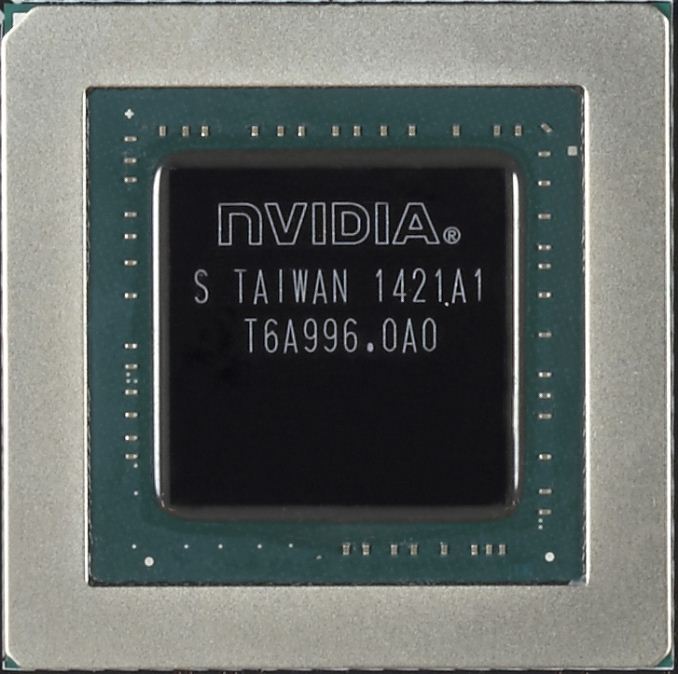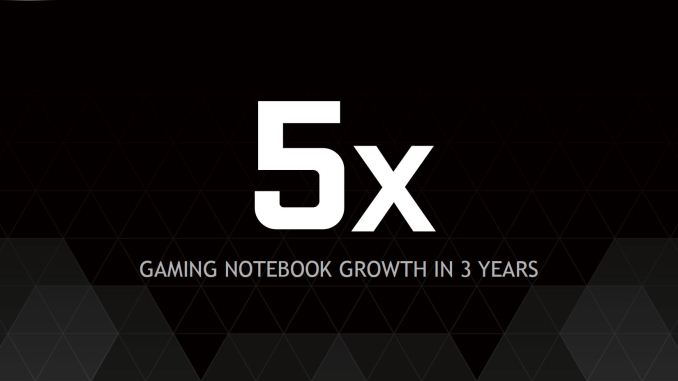NVIDIA GeForce GTX 980M and GTX 970M: Mobile to the Maxwell
by Jarred Walton on October 7, 2014 9:00 AM EST
Every year NVIDIA launches quite a few new products; some are better than others, but they're all interesting. This fall, the big news is Maxwell 2.0, aka GM204. Initially launched last month as the GTX 980 and GTX 970, NVIDIA is hopefully changing the way notebook gamers get treated by launching the mobile version of the GM204 just one month later.
We've already covered all of the new features in the desktop launch, so things like DSR, FXAA, VXGI, DX12, and GameWorks are all part of the notebook launch marketing materials. Of course, as a notebook GPU there are a few extra features available that you don't see on desktop GPUs, mostly because such features aren't really needed. Optimus Technology has been around for several years now so there's not much to add; it allows laptops to dynamically switch between the lower power integrated graphics when you're not doing anything that requires a faster GPU, and it can turn on and utilize the faster discrete NVIDIA GPU when needed. BatteryBoost is a related technology that was first introduced with the GTX 800M series of GPUs, and it seeks to improve gaming battery life. Our test platform at the time didn't really give us the gains we were hoping to see, but NVIDIA assures us that the new GM204 mobile graphics chips will do much better at providing decent battery life while running games. We'll be diving into this in more detail once we get our test notebooks.
Speaking of which, no, we don't have a notebook yet. It was supposed to arrive late last week but ended up shipping Monday instead, which means it should be arriving about the time you're reading this. We'll be posting a separate look at gaming performance as soon as we're able, and we'll have a full review of the MSI GT72 in the coming week as well. For now, what we have are specifications for the mobile versions of GM204 and an overview of what to expect from the mobile versions of NVIDIA's new GPU.
If you've been following the computing industry to any degree over the past few years, a few trends are clearly becoming ever more important. One is that many PC desktop users are migrating to laptops and notebooks, but perhaps just as important is the migration of PC users to smartphones and tablets. There are numerous reasons for the shift – convenience along with increasing performance from handheld devices – but the result is a reduction in the growth of the PC industry. The good news for NVIDIA is that gaming notebooks are still a growing market, though how you define a "gaming notebook" is certainly something that can be manipulated.
NVIDIA's own figures show a 5X growth in gaming notebook sales during the past three years, so clearly there's a demand for getting more graphics performance into laptops. In fact, that's generally the number one desire from notebook gamers: "I want desktop class performance!" NVIDIA is aiming to do just that with the launch of the GTX 980M and GTX 970M.












68 Comments
View All Comments
chizow - Tuesday, October 7, 2014 - link
Yeah, but then you'd be paying the premium 2x. In the external dispaly scenario I think I'd just go with the single stationary G-sync panel, but then again, I don't really envision myself gaming away from my SOHO. Someone buying a gaming monitor might value it more on the laptop itself I guess.nathanddrews - Wednesday, October 8, 2014 - link
Not really 2X. A G-Sync monitor is a small percentage of the total system cost of a 970M/980M laptop.johnthacker - Tuesday, October 7, 2014 - link
I am not a big fan of the "Closing the Gap" graph on page 2. The notebook and desktop icons used are very large, and I believe end up tricking the eye. At a casual glance, it is very unclear that the relative performance of the notebook is still only 75% of the desktop; it looks a lot closer. The human eye is drawn to the negative space between the two icons. While in reality only half of the performance gap has closed since the 480M, the graph gives the false impression that far more of the gap has closed, since the empty space between the icons has shrunk by well over 90%.nathanddrews - Tuesday, October 7, 2014 - link
Not to mention that the performance gap is closing because Nvidia has prioritized efficiency over performance. The desktop parts are neutered in order to improve mobile parts.JarredWalton - Tuesday, October 7, 2014 - link
All too true. If they had released a 250W GM200, I can guarantee the gap would be back to around 50%. Hahaha... But we need something for the early 2015 update when Broadwell quad-core launches, right?nathanddrews - Tuesday, October 7, 2014 - link
One can only hope!Also, I didn't mean to slam Nvidia with my other comment. I appreciate their dedication to efficiency, but I also don't mind heating my home with my GPUs if it means face-melting performance.
darth415 - Tuesday, October 7, 2014 - link
I don't know, a 3200 core (what GM200 is expected to be) graphics card makes my mouth water, despite what I know its power consumption numbers will be.adityarjun - Tuesday, October 7, 2014 - link
How much faster would the 980m be as compared to the 580m, I wonder?JarredWalton - Tuesday, October 7, 2014 - link
Well, GTX 980M is basically twice as fast as GTX 680M, and 680M was roughly 40-50% faster than 580M. That means GTX 980M is around 140-150% faster than GTX 580M. :-)http://www.anandtech.com/show/5914/nvidia-geforce-...
adityarjun - Wednesday, October 8, 2014 - link
Weirdly enough, i have the m17x r3 with the 580m and I am not at all tempted! The r3 is good enough for me.My only reason to upgrade now would be a better screen, better battery life, better speakers etc rather than raw power. I wish some companies would take note.